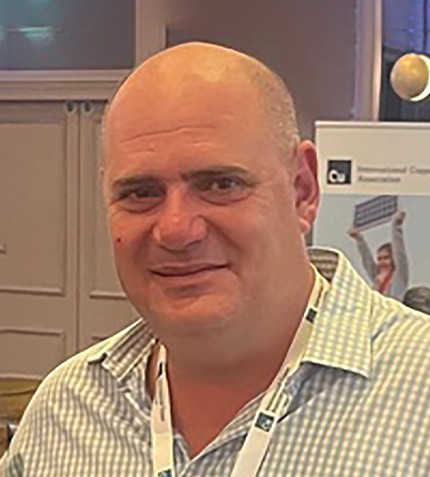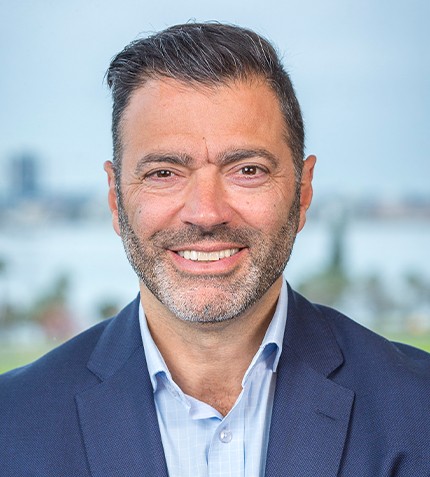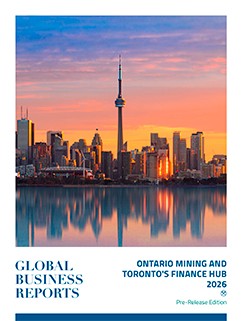
"We rely on our international relationships to pull capital into Africa. In some of the countries where we operate, we have significant local balance sheets to assist corporates directly."
Khanyisile Tshabalala Moshoeshoe
HEAD OF MINING AND METALS FINANCING, STANDARD BANK GROUP
Standard Bank is the largest bank by asset size within Africa. What’s your footprint in Mining and Metals?
With a presence in 21 African countries and the largest bank by assets on the continent, we have broad-spanning capabilities. Our local footprint, partnerships with communities, governments, local and international corporates and continued investment in each country over decades has provided us with the license to operate. The extractives sectors are at the heart of most African economies. With Standard Bank’s multi-disciplinary mining expertise, we are able to assist across the lifecycle of mining projects and tailor our solutions to cater for the complexities of this dynamic sector, including with funding for associated infrastructure.
How does your global footprint help channel capital into Africa?
Africa is our home, and we drive her growth – this is our mission statement and our reason for existing. To be able to do that, we need capital from global sources. We rely on our international relationships to pull capital into Africa. In some of the countries where we operate, we have significant local balance sheets to assist corporates directly.
How has Standard Bank supported mining companies in overcoming power shortages?
Countries like Zambia have struggled with a severe drought and a shortage of available power, and Standard Bank has been central in supporting mining operators to invest in alternative power. In South Africa, we have been at the forefront of financing the burgeoning renewable space. We’ve been able to transfer our experience in South Africa to Zambia.
What’s your view on the current lending environment for mining companies in Africa?
We are seeing a greater pull of capital into Africa compared to pre-COVID days, including large-ticket streaming companies. The number of projects coming up online has increased, driven by a mix of loan providers, including commercial banks, development banks, government-backed agencies, specialist private equities, and the large mining houses. Of course, it is very commodity dependent. Gold and copper continue to be the favorites. Battery metals related commodities are still of interest. A good project with clear scalability will find various pockets of capital available these days. Banks (particularly African banks) have traditionally shied away from straight-up greenfield project financing, but they are now slowly coming back to the party with hybrid financing packages, which speak to the appetite for investment in projects at different stages.
Another interesting dynamic is the change of hands from foreign-led, larger mining companies to local players or in some cases, the state. In South Africa, many of the large players that have been mining in the country since the 1980s have sold to local South African companies and facilitated local ownership.
What is the investment sentiment in South Africa like in 2025?
It’s improving compared to the past period of full-scale load shedding, challenges with Transnet and intense uncertainty around mining licenses and charter changes. We’ve also moved past the uncertainty about whether the incumbent government would stay in power or if there would be a change etc. Yes, there are public disagreements and political infighting, but they’ve (so far) found ways to work together. On balance, I’d say sentiment is more positive than it was 12-18 months ago. That said, major challenges remain: Transnet still isn’t delivering at the levels the mining industry needs, and road infrastructure falls short of what was promised. However, there are efforts underway, from the National Logistics Committee to Crime-Prevention initiatives, where public and private sectors are working together. Public–private partnerships, particularly in transport, are gaining momentum. So, I’m cautiously optimistic.
Standard Bank was part of the AfCFTA negotiations. Do you offer any kind of cross-border transaction platform to facilitate intra-African transactions?
Yes - we offer solutions for our clients that factor in cross-border operations to simplify transactions and contribute to the financial integration of the continent, and we are the first authorized bank on the continent to offer transactions through China’s Cross-Border Interbank Payment System (CIPS).
What are your priorities for Standard Bank this year?
With the largest balance sheet on the continent, we can fund major acquisitions and projects, ensuring they have the backing they need. And it’s not just about mining assets: every mining job creates and has a multiplier effect on more jobs. Our goal is to keep driving that broader economic impact across Africa.










